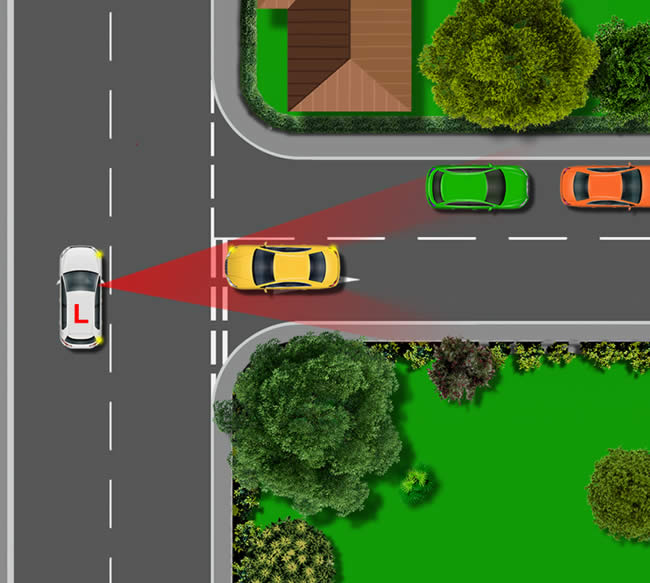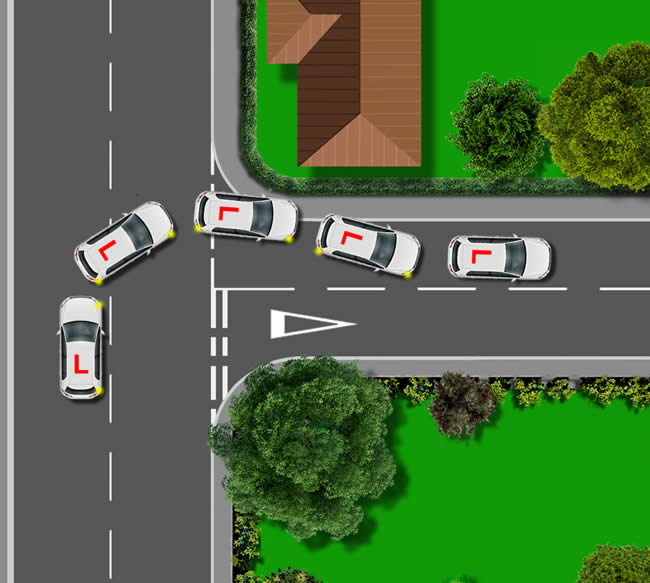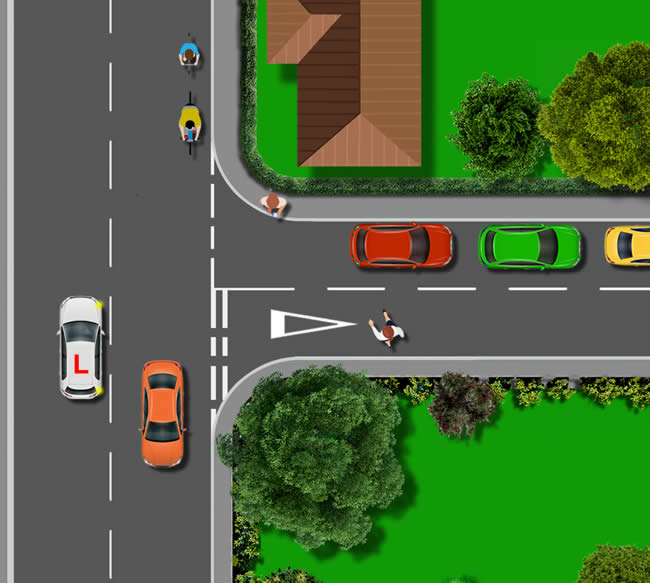If you don’t first need to stop to give way to oncoming traffic, you can usually expect to make a right turn from between 5 to 10 mph. However, every right turn is different and the speed at which you make a right turn depends on:
- What you can, or cannot see in the side road.
- The size of the road that you’re turning into.
- What’s going on at the junction area.
Look Before Turning Right
Before making a right turn, don’t just look for hazards around the junction area. Take a good look down the road as this will help you anticipate and plan ahead. Further down the road for example, you may see parked cars and you may need to be prepared to give way to oncoming vehicles when you enter the right turn.
What You Can Or Cannot See in the Side Road
The speed in which you take a right turn will be determined by what you can or cannot see. In the diagram below, we can see that the learner driver’s view of the right turn is obscured.

The yellow car turning right and the parked cars make the view of the road ahead almost entirely obscured. In this instance, the learner driver will need to enter the right turn at a slow speed and prepare to stop.
The Size of the Road That You’re Turning Into
The speed at which you take a right turn is also determined by the size, or width of the side road. Your car’s turning circle might increase the faster you take the turn.

This is because the faster your car is moving, the less amount of steering you’ll be able to achieve and increase the risk of hitting the kerb or mounting the pavement. By keeping your car very slow, but steering as quickly as possible, you’ll be able to keep your car’s turning circle small.
What’s Going On Around the Junction Area
Junctions are areas where 2 or more roads intersect and as such, there’s often a lot of activity around junctions. You need to be travelling at an appropriate speed that enables you sufficient time to see what’s going on time to react to a situation.

At busy junctions, you may have pedestrians, cyclists, other vehicles and parked cars to deal with. You need to be travelling at a suitable speed that allows you to time react to an unexpected situation, such as a pedestrian walking into the road for example.
When Making the Turn, Do You Brake or Accelerate?
Assuming that you’ve not had to first stop to give way to oncoming traffic, ideally you should slow down to an appropriate speed for the right turn, then cover the brake whilst making the turn.
To ‘cover the brake’ means to hover your foot over the brake pedal in preparation to press it. This is done so that we can quickly respond (slow down or stop) to hazards. We use the car’s momentum to make the turn.